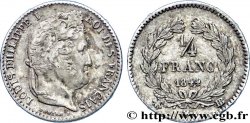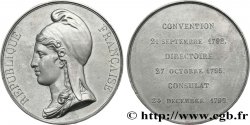Live auction - fme_1014607 - LUIGI FILIPPO I Médaille, Retour des cendres - funérailles de l’Empereur
Devi Sign-in ed essere un offerente approvato fare un'offerta, Login per fare offerte. Conti sono soggetti ad approvazione e di approvazione sono raggiunti entro 48 ore. Non aspettare fino al giorno di una vendita si chiude per registrarti.Confermando la tua offerta su questo oggetto ti impegni ad un contratto legalmente vincolante per l'acquisto di questo prodotto e fare clic su «offerta» costituisce accettazione dei termini di utilizzo de live auctions cgb.fr.
Offerta deve essere collocato in euro gli importi interi vendita only.The si chiuderà al momento sulla descrizione dell'oggetto, eventuali offerte pervenute al sito dopo l'orario di chiusura non verranno eseguite. Volte transmition possono variare e le offerte potrebbero essere respinto se si attende per gli ultimi secondi. Per ulteriori informazioni ckeck le FAQ Live auction.
Le offerte vincenti saranno sottomesse ai 18% per spese di compartecipazione alla vendita.
Le offerte vincenti saranno sottomesse ai 18% per spese di compartecipazione alla vendita.
| Valutazione : | 80 € |
| Prezzo : | 53 € |
| Offerta maxima : | 53 € |
| Data di fine vendita : | 13 maggio 2025 17:45:41 |
| partecipanti : | 2 partecipanti |
Tipo : Médaille, Retour des cendres - funérailles de l’Empereur
Data: 1840
Metallo : rame
Diametro : 56,5 mm
Asse di coniazione : 12 h.
Incisore MONTAGNY Jean-Pierre (1789-1862)
Peso : 105,18 g.
Orlo : lisse
Marchio : sans poinçon
Commenti sullo stato di conservazione:
Médaille nettoyée. Traces de rayures et de concrétion. Trois trous sur la tranche (marques de griffe pour tenir ou monter la médaille)
Diritto
Titolatura diritto : NAPOLÉON - EMPEREUR.
Descrittivo diritto : Tête laurée de Napoléon Ier à gauche. Signé : MONTAGNY F..
Rovescio
Titolatura rovescio : À L’EXERGUE : FUNÉRAILLES DE L’EMPEREUR / 15 D.BRE 1840..
Descrittivo rovescio : Vue du cortège funèbre, avec l’Arc de Triomphe en arrière plan. Signé : MONTAGNY F..
Commento
En 1840, le président du Conseil Adolphe Thiers négocie avec le gouvernement anglais le retour des cendres de Napoléon 1er à Paris. Il veut, par cette initiative, redresser le prestige du roi Louis-Philippe 1er. Les Anglais acceptent le transfert, désireux qu'ils sont de se concilier la France avec laquelle ils sont en conflit sur la question d'Orient.
Le 15 décembre 1840, au cours d'une cérémonie populaire et grandiose, le char funèbre entre à Paris et se dirige vers les Invalides où il est accueilli par le roi en personne. Le sarcophage est exposé dans une chapelle du Dôme des Invalides en attendant son transfert dans la crypte monumentale, en 1861.
Sur le trajet, un million de Parisiens devenus bonapartistes pour l'occasion n'hésitent pas à crier « Vive l'Empereur ! ».
Le principal bénéficiaire de l'opération est le courant bonapartiste. Il reprend vie et il ne lui faudra que huit ans pour amener au pouvoir Louis-Napoléon Bonaparte, neveu du regretté empereur.
Napoléon 1er repose depuis lors en l'église Saint-Louis-des-Invalides, selon le voeu qu'il avait exprimé sur son île : « Je désire que mes cendres reposent sur les bords de la Seine, au milieu de ce peuple français que j'ai tant aimé » (Mémorial de Sainte-Hélène).
In 1840, the President of the Council, Adolphe Thiers, negotiated with the English government the return of Napoleon I's ashes to Paris.. With this initiative, he wants to restore the prestige of King Louis-Philippe I.. The English accepted the transfer, eager as they were to reconcile France with which they were in conflict over the Eastern question..
On December 15, 1840, during a popular and grandiose ceremony, the funeral carriage entered Paris and headed towards the Invalides where it was welcomed by the king himself.. The sarcophagus is displayed in a chapel of the Dôme des Invalides while awaiting its transfer to the monumental crypt in 1861..
Along the way, a million Parisians who had become Bonapartists for the occasion did not hesitate to shout \\\"Long live the Emperor!\\\".
The main beneficiary of the operation is the Bonapartist movement. He came back to life and it took him only eight years to bring Louis-Napoléon Bonaparte, nephew of the late emperor, to power..
Napoleon I has since rested in the church of Saint-Louis-des-Invalides, according to the wish he expressed on his island: \\\"I wish my ashes to rest on the banks of the Seine, among the French people whom I loved so much\\\" (Saint Helena Memorial)
Le 15 décembre 1840, au cours d'une cérémonie populaire et grandiose, le char funèbre entre à Paris et se dirige vers les Invalides où il est accueilli par le roi en personne. Le sarcophage est exposé dans une chapelle du Dôme des Invalides en attendant son transfert dans la crypte monumentale, en 1861.
Sur le trajet, un million de Parisiens devenus bonapartistes pour l'occasion n'hésitent pas à crier « Vive l'Empereur ! ».
Le principal bénéficiaire de l'opération est le courant bonapartiste. Il reprend vie et il ne lui faudra que huit ans pour amener au pouvoir Louis-Napoléon Bonaparte, neveu du regretté empereur.
Napoléon 1er repose depuis lors en l'église Saint-Louis-des-Invalides, selon le voeu qu'il avait exprimé sur son île : « Je désire que mes cendres reposent sur les bords de la Seine, au milieu de ce peuple français que j'ai tant aimé » (Mémorial de Sainte-Hélène).
In 1840, the President of the Council, Adolphe Thiers, negotiated with the English government the return of Napoleon I's ashes to Paris.. With this initiative, he wants to restore the prestige of King Louis-Philippe I.. The English accepted the transfer, eager as they were to reconcile France with which they were in conflict over the Eastern question..
On December 15, 1840, during a popular and grandiose ceremony, the funeral carriage entered Paris and headed towards the Invalides where it was welcomed by the king himself.. The sarcophagus is displayed in a chapel of the Dôme des Invalides while awaiting its transfer to the monumental crypt in 1861..
Along the way, a million Parisians who had become Bonapartists for the occasion did not hesitate to shout \\\"Long live the Emperor!\\\".
The main beneficiary of the operation is the Bonapartist movement. He came back to life and it took him only eight years to bring Louis-Napoléon Bonaparte, nephew of the late emperor, to power..
Napoleon I has since rested in the church of Saint-Louis-des-Invalides, according to the wish he expressed on his island: \\\"I wish my ashes to rest on the banks of the Seine, among the French people whom I loved so much\\\" (Saint Helena Memorial)








 Segnalare un errore
Segnalare un errore Stampate la pagina
Stampate la pagina Condividi mia selezione
Condividi mia selezione Fai una domanda
Fai una domanda Consegnare / vendere
Consegnare / vendere
 Descrittivo
Descrittivo









